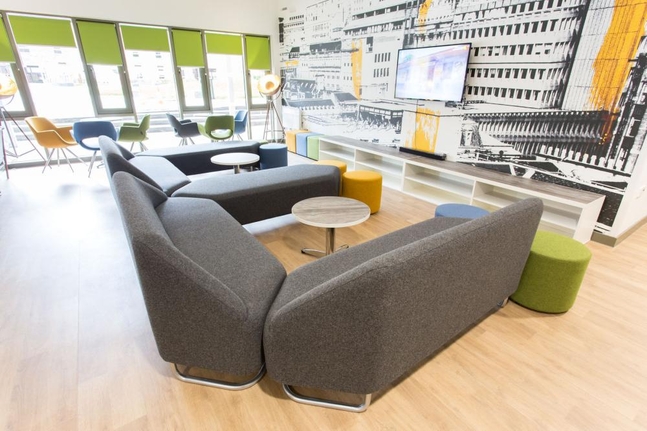
GLASGOW-based HLM Architects has been appointed to lead the design of the National Manufacturing Institute Scotland, bringing the nation’s international centre of manufacturing one step closer to realisation.
The National Manufacturing Institute Scotland (NMIS), hosted by the University of Strathclyde, seeks to make Scotland a global leader in advanced manufacturing. It also aims to drive productivity and skills development by bringing industry, research and the wider public sector together.
HLM Architects will lead a design team including Waterman Civil & Structural Engineers, Davie + McCulloch Building Services Engineers and Robinson Low Francis LLP cost managers. The practice will also be providing landscape architecture and interior design services, while Turner & Townsend has been appointed project managers under the university’s framework agreement.
NMIS will be located adjacent to Glasgow International Airport and will include a Digital Factory 2050, Manufacturing Skills Academy and collaborative working spaces. It intends to offer Scottish businesses access to expert services, advanced demonstrator facilities and training programmes focused on innovative manufacturing.
NMIS will be the anchor for the Advanced Manufacturing Innovation District Scotland (AMIDS), which is set to benefit from a £39 million investment to provide enabling infrastructure, funded through the Glasgow City Region Deal.
The £65 million plus investment includes £48 million from the Scottish Government and £8 million from the University of Strathclyde, as well as £9 million in the Lightweight Manufacturing Centre, which is a first phase of NMIS. The phase one construction value is expected to be in the region of £38 million, according to HLM Architects.
Rose Barrett, associate HLM commented, “HLM and the design team are excited to be working closely with the University of Strathclyde and their partners to develop the new NMIS facility.
“This is a huge opportunity to create an innovative, flexible and collaborative environment which will help inspire and attract industry partners and academics alike, reducing barriers to innovation.”











